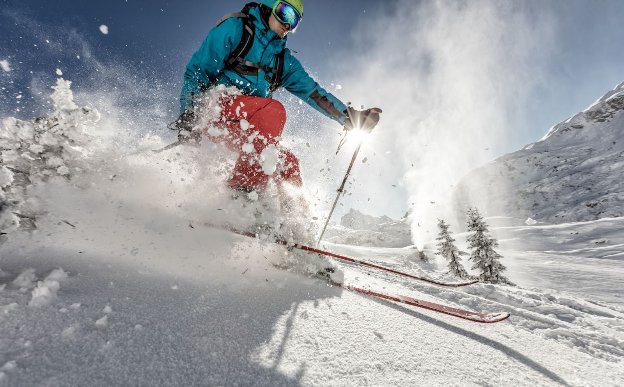1. Maintain Good Physical Fitness All Year
It is important to stay in good physical condition year-round. This means exercising regularly and staying strong, flexible and fit. Beginning your winter season without conditioning your muscles and lungs will make it challenging to feel confident on the slopes — and it probably won’t be as fun.
Regular cardiovascular exercise and light to moderate strength training will help your body be prepared for skiing and snowboarding, so you’re less prone to injury or soreness. No matter what your fitness level, it’s always a good idea to begin your day with an easier run or two before testing your joints and muscles on more challenging trails.
2. Warm Up Before Skiing
A proper warm-up is essential for preventing injury when skiing or snowboarding — or performing any exercise for that matter! This means stretching, light cardio to get your heart rate up, as well as doing some lower body strength exercises before hitting the slopes. Research shows that cold muscles are more prone to injury, so do what you can to warm them up before doing anything too strenuous.
3. Stay Hydrated
Skiing and snowboarding can be intense full-body workouts, which means you may sweat more than usual. Additionally, cold air often leads people to subconsciously speed up their breathing rate without noticing, leading to more rapid water loss. As a result, it is extremely important that you drink plenty of fluids before hitting the slopes, while on the trails (don't wait until you are thirsty) and after skiing and riding too.
4. Follow Ski Safety Rules
It's also very important to know mountain safety rules in order to prevent injury. If you are a beginner, we recommend taking lessons to learn the fundamentals of your sport. Even if you are a more advanced skier or snowboarder, it’s still important to remember these basic ski and snowboard fundamentals. Don’t ski or ride beyond your ability level, and consider skiing with a friend when you venture into challenging terrain.
5. Use Safety Equipment
One way to prevent injury is by understanding equipment safety features like bindings and helmets. Make sure that your skis are equipped with proper release bindings (they should be tested every year) and that you know how to use them properly. Ensure that snowboard bindings are secure. Helmets can also help prevent head injuries during a fall or collision.
6. Choose Equipment That Fits
Another key to staying safe while skiing is having equipment that fits properly and works well with your skill level. For example, skis and boards should be the right length for your height, and a helmet should fit snugly but not be too tight. Good quality ski and snowboard boots that fit your feet well are also essential for preventing injury.
7. Stay Warm
It is important to dress in layers that are appropriate for the weather. This means dressing in thermal clothing under your snow pants and outerwear, as well as wearing a helmet, gloves or mittens (depending on the weather), and putting sunscreen on any exposed skin before heading out onto the slopes.
8. Have an Action Plan for When Ski Injuries Happen
Whether you have been skiing or riding your entire life or it's the first time, everyone is at risk for injury — that's just the reality of the sport. It is important to have a plan in place in the event of an injury. An action plan may include:
- Ski or snowboard with another person so that you can get help if necessary
- If skiing or riding alone, let other people know your location or schedule a meet-up time to reconnect
- Know where the ski patrol station and medical facilities are located on the mountain Have your medical insurance information on your person, or saved in your phone
9. Know When to Stop
If you find yourself struggling, then it is time to take a break. This could mean going inside to warm up or have some food or finishing the activity early and coming back another day. If you feel the mountain conditions are too challenging, whether due to snow, weather conditions or the trails are too difficult for your ability level, it’s a good idea to take a break or stop for the day. Even the most experienced riders take breaks or decide the mountain isn’t safe enough for a fun day of skiing or snowboarding.
Visit The Steadman Clinic
The Steadman Clinic has locations near major ski resorts in Eagle, Summit and Pitkin Counties in Colorado. If you do experience an injury while you’re at a Colorado resort, The Steadman Clinic physicians are available to treat all orthopaedic injuries and help you get back to skiing and snowboarding safely.


